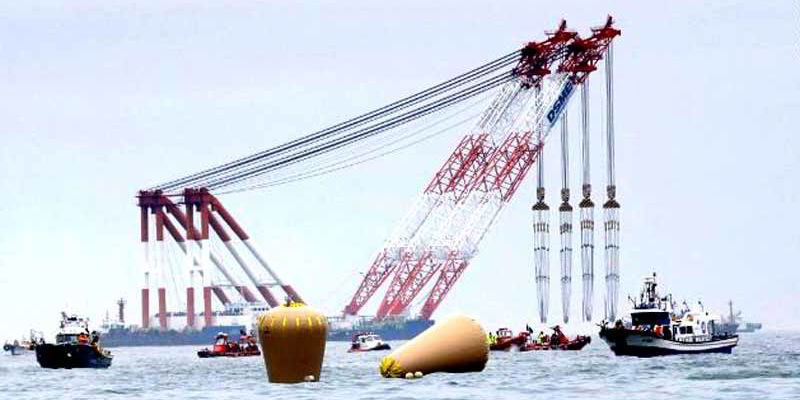Four large floating cranes are being mobilised to the location where the 6,586-gt Sewol (built 1994) sank but it looks as if they will be involved in salvage or wreck removal rather than the ongoing search for 268 people still missing.
The country’s shipyards are mainly located in the south east of the Korean peninsula rather than particularly near the location the Sewol sank.
Both Samsung Heavy Industries and Daewoo Shipbuilding & Marine Engineering have yards on Geoje Island, while Hyundai Heavy Industries’ complex is at Mipo Bay near Ulsan.
Reports from South Korea say two 3,600 ton and two 2,000 ton floating cranes from the shipyards are either on their way or have arrived at the Sewol wreck site.
An 8,000 ton crane is also being sent from Geoje, while a floating dock from Hyundai Samho Heavy Industries may be used in efforts to recover the Sewol.
The wreck has not shifted with the upturned bow still visible above the waterline.
There are so far no reports of a salvage or wreck removal contract being signed but the South Korean authorities indicated efforts to recover the Sewol would not be undertaken until all hope had been given up for any survivors being trapped in air pockets in the capsized ferry.
Air is being pumped into the upturned hull but there are conflicting reports from the scene on whether an army of up to 500 divers have managed to enter the sunken vessel.
The third officer was at the helm of the Sewol rather than the master, Lee Joon Seok (69), when the vessel capsized and sank. A tear in the hull from striking submerged rocks or a shift of cargo on the ro-ro vessel is seen as possible causes of the casualty.
The confirmed death toll from the ferry disaster has now reached 28. There are 179 survivors, but 268 people missing, with hopes fading that they might still be alive.
Both Lee and Kim Han Sik, president of ferry owner, Chong Hae Jin Marine, have made emotional apologies for the disaster.
Prosecutors are investigating if charges should be brought as a result of the disaster.



